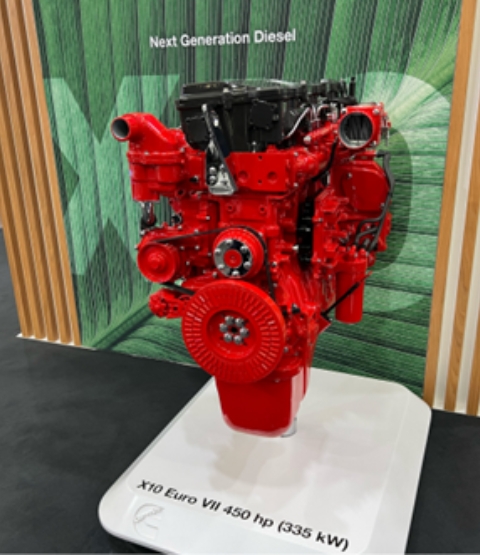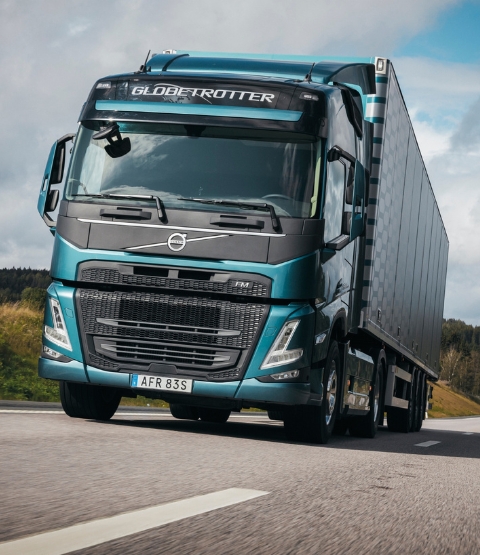The internal combustion engine comes in for a lot of stick. It all began with the revelation in the United States of the notorious Volkswagengate (or Dieselgate) affair, announced on the very day the IAA Frankfurt motor show opened to the media. Immediately, a number of NGOs seized on the affair and unleashed an all-out attack on diesel. If that wasn't enough, the same NGOs pounced on a 2012 report by the International Agency for Research on Cancer (IARC) evaluating the carcinogenicity of petrol and diesel engine exhaust gases and certain nitroarenes. This is a thorough study, but it includes diesel engines used in the rail and mining industries, with statistical cohorts monitored since the 1980s!
Due to the length of time taken to monitor the populations studied, this study omits the fact that diesel fuel and diesel engine pollution control have evolved considerably over the years. There was the application of European Auto Oil I and II standards at the turn of the millennium, which required refiners and distributors to use diesel with a very low sulphur content (10 ppm). The targets for truck emissions are radical, with a 90% reduction by 2040. End of story? Not quite.

Diesel: new Euro VII compliant engines?
To general surprise, Scania launched its DC13 Super generation in 2022, announcing a thermodynamic efficiency of over 50% in the 4-stroke diesel cycle (probably using the old SAE measurements, without engine peripherals or exhaust systems). Scania justified this choice by explaining that there would always be a need for diesel engines in non-road applications. And there will always be a need for a combination of high power, payload and range for certain applications: exceptional transport, cranes, suction pumps and other special types of chassis. Based on more or less the same arguments, FPT Industrial (the engine division of the Iveco Group) and Cummins presented their new internal combustion engines at the IAA 2022 exhibition. Cummins kicked off proceedings in the first half of 2024 with its X15 HELM. Iveco FPT Industrial launched its Cursor XC13 Diesel in summer 2024. Volvo Trucks, a zealous promoter of ‘all-electric’ since 2018, announced at the start of 2024 the forthcoming launch of the 17.3-litre Volvo D17K. This is an evolution of the D16K engine, which has already made its mark in Euro VI. All these engines have been announced as being compatible with the Euro VII standard, due to come into force on 13 March 2024. For Cummins, its X15 HELM engines have also been announced as compatible with the latest EPA specifications (to be applied between 2028 and 2032) and the requirements of the State of California (CARB standards). Given this list, it is clear that the combustion engine has not given up the fight.
On a similar subject: Road freight transport: the energy transition at the heart of European lawmakers’ plans
Diesel engines not necessarily dependent on fossil fuels
Reducing the diesel engine to diesel fuel alone is simplistic. Berliet developed multi-fuel engines in France from the 1950s onwards, and the list was endless: heavy fuel oil, castor oil, various alcohols. During the Second World War, Germany industrialised the Fischer-Tropsch process, discovered in 1923, to produce synthetic fuels from coal, a process that was perfected in the 1960s and 1970s by South Africa. Fatty acid methyl esters (FAMEs) of vegetable origin and HVOs must meet the requirements of the RED II Directive No. 2018/2001 of 11 December 2018 on renewable energies. This incorporation of vegetable oils - waste oils from the catering industry or oil cakes - into diesel fuel can go much further than B7, provided that a few adjustments are made to the maintenance and filtration of fuel supply circuits for heavy-duty vehicles. MAN, Renault Trucks, Scania and Volvo Trucks have approved B100, either in flexible form or exclusively on all or part of their engine ranges. Additional fuel consumption may be observed (around 8% according to TotalEnergies), but this varies from one model to another. This can be explained physically by the lower calorific value (LCV) of B100 compared with diesel. The CO2 balance ‘from well to wheel’ is also advantageous (up to 90% reduction according to ADEME), with the argument that production is favoured by the French Ministry of Agriculture.
On a similar subject: “SOLUTRANS OnAIR #26 – State of play of biofuels in heady duty vehicles (with C. de Ternay d'Altens)” - in French
HVO and bioHVO, or the perfect diesel?
HVO and bioHVO, or the perfect diesel?
The Fischer-Tropsch process is the starting point for synthetic paraffinic oils in the xTL and HVO sectors. These synthetic fuels (xTL and HVO) comply with standard EN 15940. The good news is that all manufacturers, without exception, have recognised the compatibility of their new Euro VI-e vehicles with the EN 15940 standard. The only point to watch out for is that additional heater burners need to be adapted to work with these fuels. For customs reasons (France has not yet authorised the sale of HVO in public networks, unlike Belgium, Germany, the Netherlands and Sweden), HVO can currently only be supplied in private tanks. TotalEnergies, like Altens, Bolloré Energies, Falaize Energies alternatives, Neste and Shell, among others, are selling it to businesses.

This article is an excerpt from the special edition of SOLUTRANS LE MAG dedicated to the ‘Rencontres de la Filière by SOLUTRANS’. Find this publication, as well as many other articles relating to the world of TRM (use of AI, new legislative frameworks, internal combustion engines, etc.) by downloading the e-magazine (in French only) free of charge!

